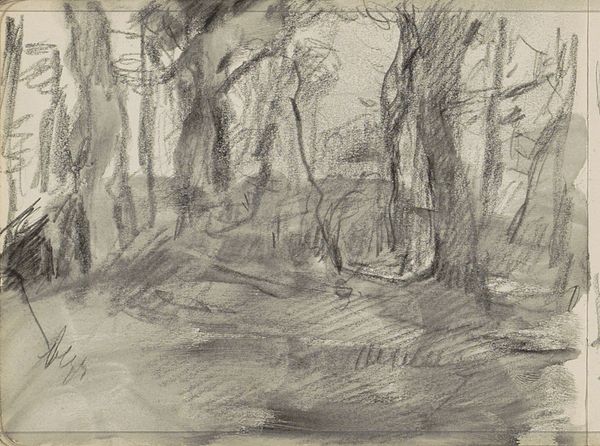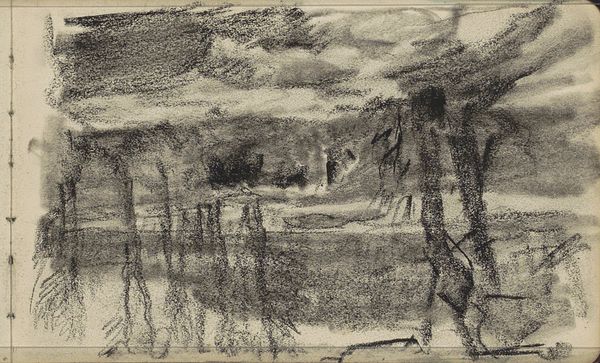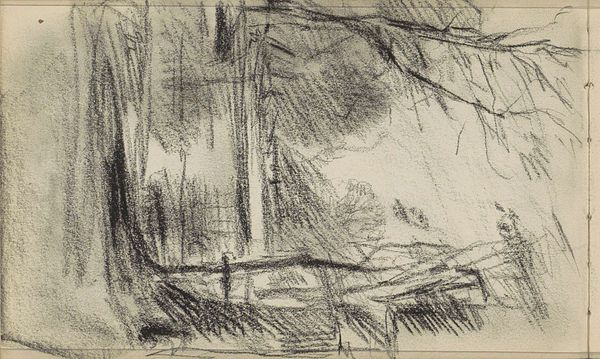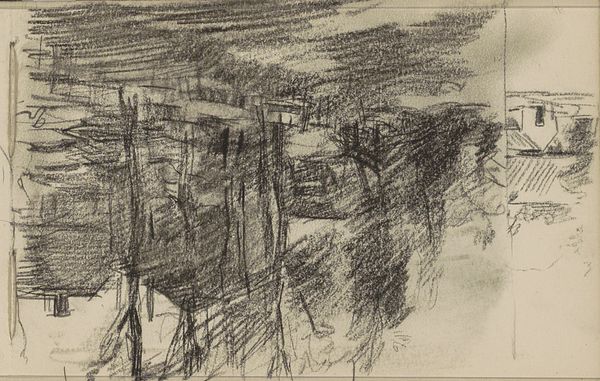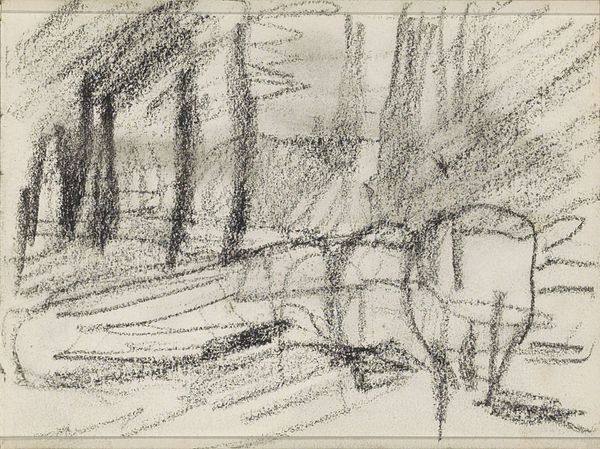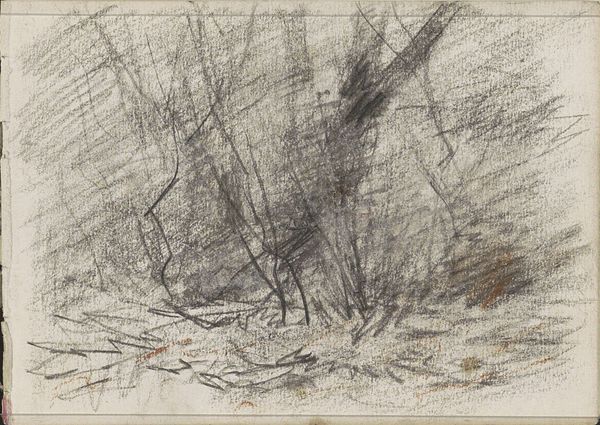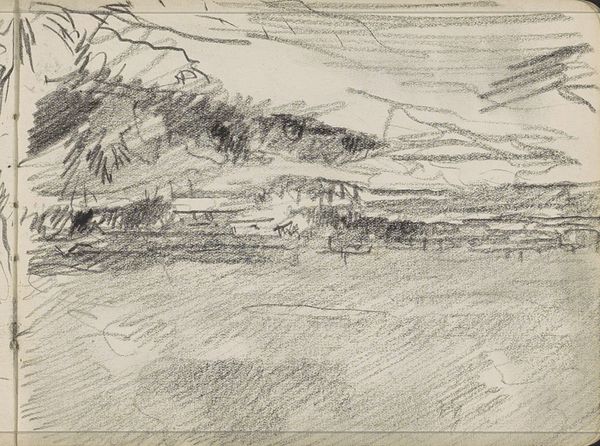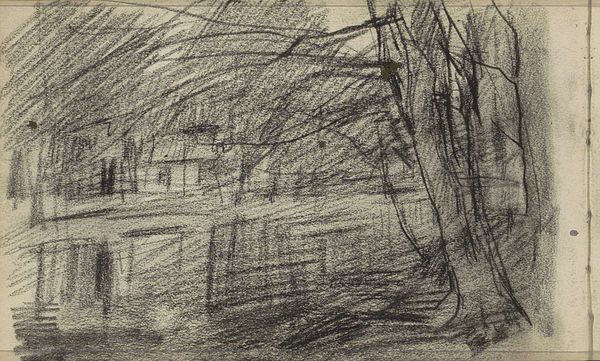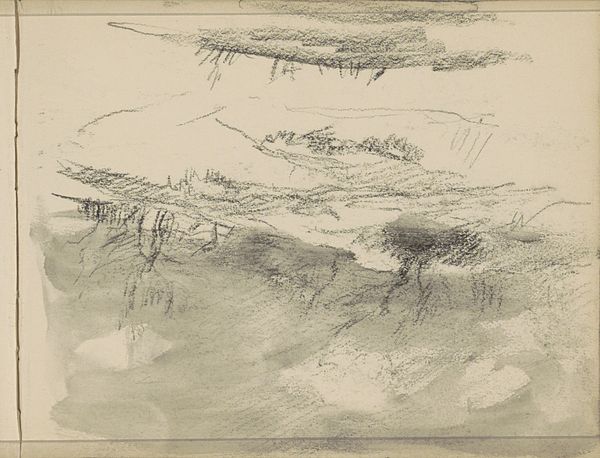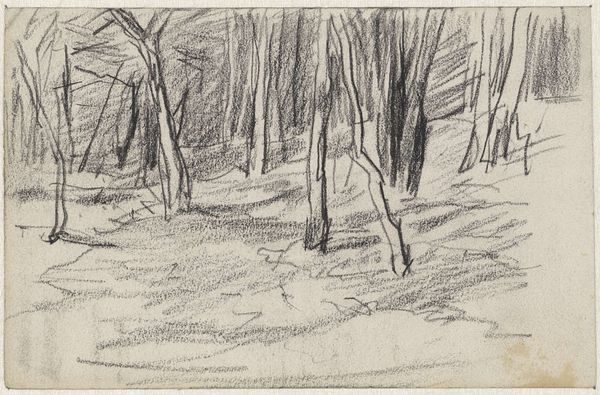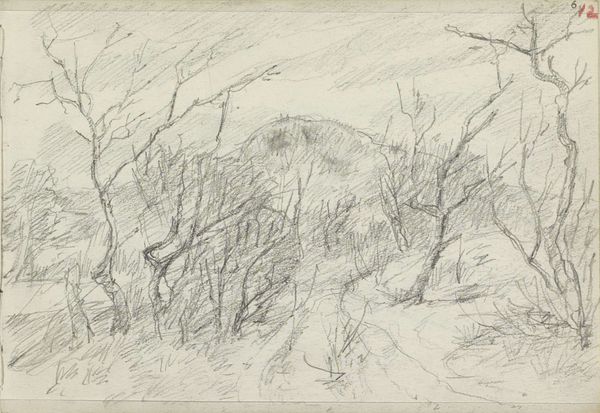
drawing, paper, pencil
#
tree
#
drawing
#
amateur sketch
#
toned paper
#
light pencil work
#
pen sketch
#
pencil sketch
#
incomplete sketchy
#
landscape
#
paper
#
personal sketchbook
#
pen-ink sketch
#
pencil
#
sketchbook drawing
#
sketchbook art
#
realism
Copyright: Rijks Museum: Open Domain
Curator: This delicate pencil drawing on paper is titled "Landschap met bomen," or "Landscape with Trees," by Johan Antonie de Jonge, dating from somewhere between 1884 and 1927. Editor: It's got a beautifully somber feel, all those greys swirling together to make a little copse of trees. Sort of melancholic in its simplicity. What about the materials? The pencil work looks very specific. Curator: The evident skill in varying the pencil strokes allows the artist to define the form and texture of the trees. De Jonge really captures the subtle variations in light as it filters through the leaves, using only graphite. Consider also that this work most likely came from the artist's personal sketchbook. Editor: Right, because the toned paper looks like a Moleskine, doesn't it? It lends an interesting immediacy, making the piece less a formal landscape and more like a snapshot of the artist's interaction with his immediate surroundings. Almost as if de Jonge just reached into their bag and began the work directly in front of them, without prep. I wonder if this process was chosen by the artist to convey authenticity. Curator: Yes, the incomplete quality is quite suggestive. The stand of trees represented here is a potent, cross-cultural symbol – think of the Germanic forests and Romantic painters, or ancient ideas about groves being sacred spaces. Editor: Well, even if the symbol of trees resonates, I would argue the artist's immediate intent may have been capturing how pencil on slightly textured paper renders a sense of place or personal encounter, without lofty ideals in mind. We shouldn't discard the value of readily-available and relatively inexpensive drawing tools as central to the development of certain visual languages and artistic styles. Curator: True, and I appreciate your insight on the artistic and material choices – that rough quality has its own power. Editor: Precisely. The mood relies a great deal on the unpretentious, raw quality that emerges from working directly with basic, readily accessible materials. It brings a stark vulnerability to the piece.
Comments
No comments
Be the first to comment and join the conversation on the ultimate creative platform.
